

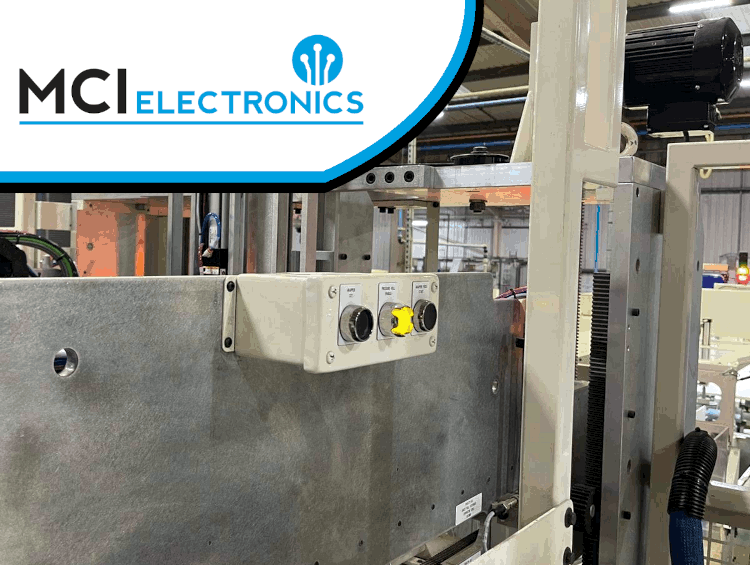
Date posted:
A long term MCI customer asked us for help resolving a problem with the location of control buttons on a number of their machines. The standard machine came with a fixed control box that did not suit the customers operational needs. MCI’s solution was to remove the static control boxes…
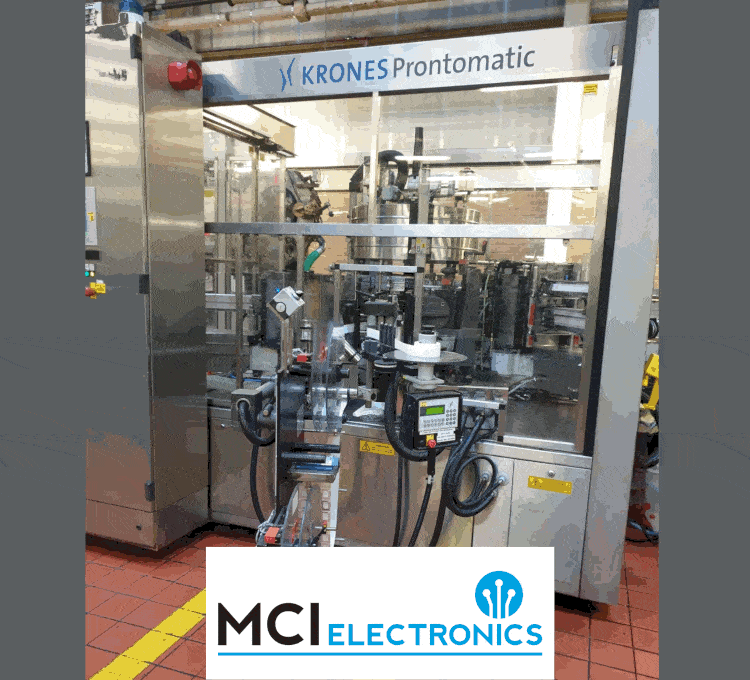
Date posted:
MCI were called out to an emergency at a bottling plant. A Krones Prontomatic bottler / labelling machine had conveyor issues halting production. MCI’s engineers investigated and diagnosed a fault on a profibus card fitted to one of the obsolete Danfoss drives. The drive was removed and taken to our…
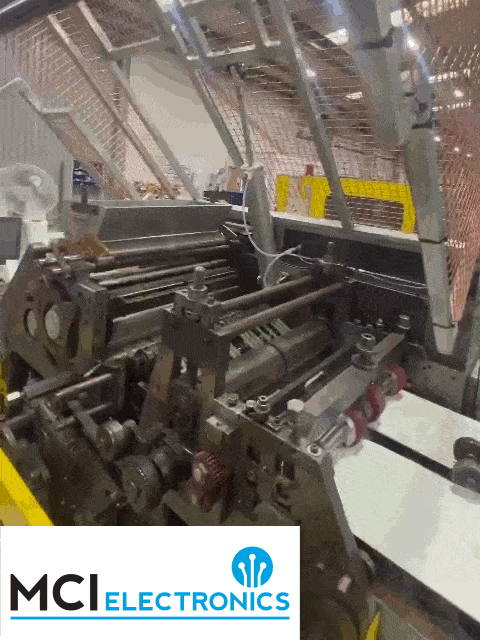
Date posted:
MCI was asked to supply and fit a pneumatic ram with controls to an existing safety gate that was previously opened manually by the operator. MCI worked with the customer to find out their needs, researched the parts required, attended their site and performed the installation.The design incorporated a bump…
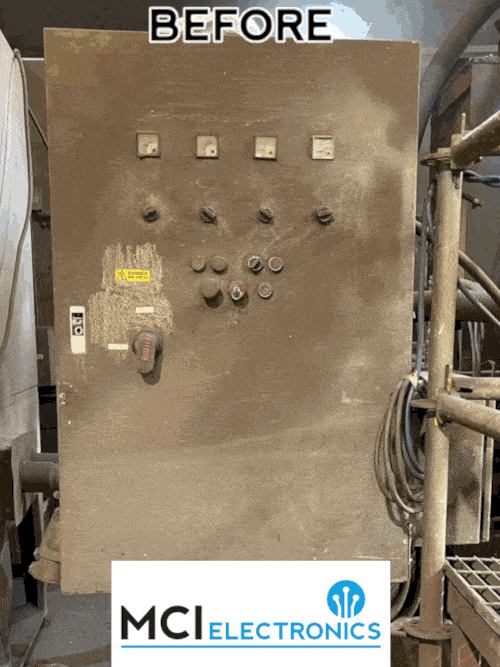
Date posted:
MCI was asked by a new customer, that services the oil and gas sector, nuclear power and national fabricators, to replace the control system for a shot blast process. The customer asked not only for us to replace the old panel, but also to redesign it. We were asked to…
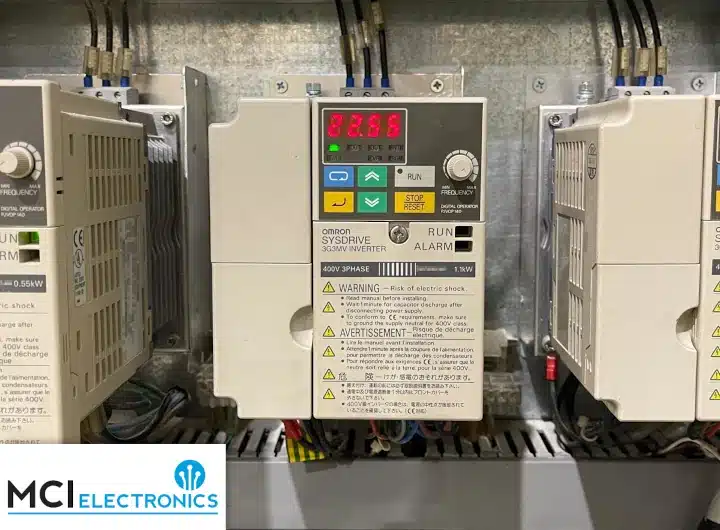
Date posted:
MCI was asked, by a manufacturer, to fix their main production machine. The old inverter had failed and the customer didn’t have a backup to programme the settings on the new inverter. MCI came to the rescue and were able to bring the old inverter back to life just long…

Date posted:
MCI received a request from a food supplier who wanted a safety system fitted to their automated fryer. MCI designed, manufactured and installed a system based around the customer’s requirements. This system works with the existing machine sensors, to shut the machine down if there is an issue. If you…
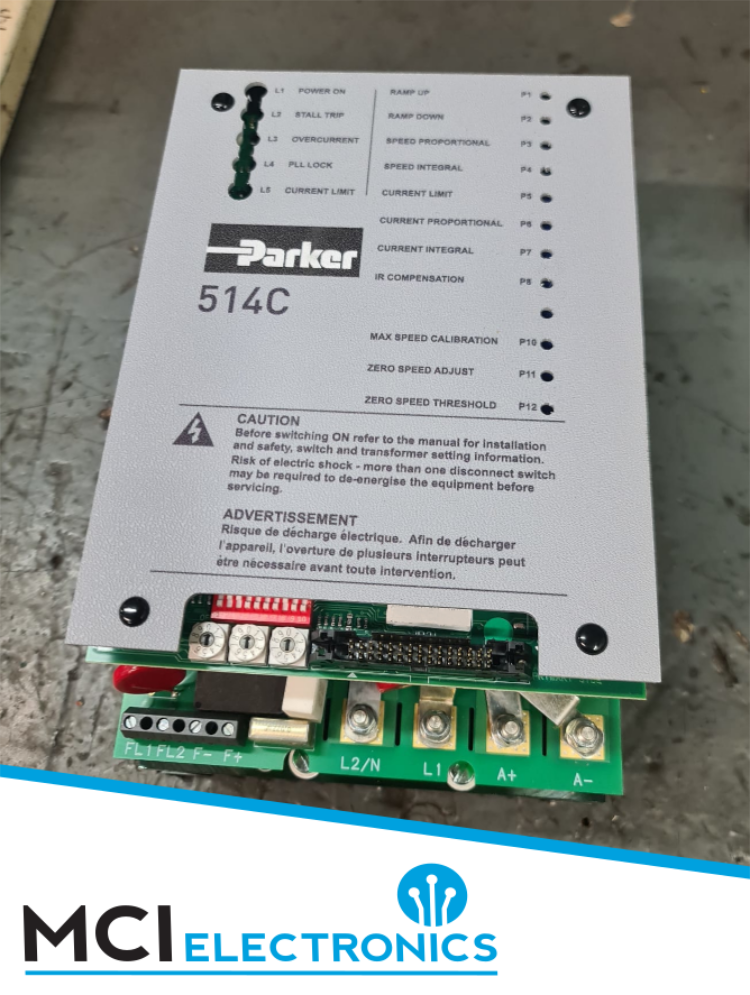
Date posted:
MCI sourced, supplied and installed this new DC Drive unit as well as set it up for optimum performance. These units are very common in the motor control industry. If you are looking for motor control solutions, give MCI a call on 01324 611371.
Adapt Before and after Design Dog of the month Install Manufacture Refurbish Repair Supply Update
MCI Electronics Ltd
We firmly believe that the internet should be available and accessible to anyone, and are committed to providing a website that is accessible to the widest possible audience, regardless of circumstance and ability.
To fulfill this, we aim to adhere as strictly as possible to the World Wide Web Consortium’s (W3C) Web Content Accessibility Guidelines 2.1 (WCAG 2.1) at the AA level. These guidelines explain how to make web content accessible to people with a wide array of disabilities. Complying with those guidelines helps us ensure that the website is accessible to all people: blind people, people with motor impairments, visual impairment, cognitive disabilities, and more.
This website utilizes various technologies that are meant to make it as accessible as possible at all times. We utilize an accessibility interface that allows persons with specific disabilities to adjust the website’s UI (user interface) and design it to their personal needs.
Additionally, the website utilizes an AI-based application that runs in the background and optimizes its accessibility level constantly. This application remediates the website’s HTML, adapts Its functionality and behavior for screen-readers used by the blind users, and for keyboard functions used by individuals with motor impairments.
If you’ve found a malfunction or have ideas for improvement, we’ll be happy to hear from you. You can reach out to the website’s operators by using the following email
Our website implements the ARIA attributes (Accessible Rich Internet Applications) technique, alongside various different behavioral changes, to ensure blind users visiting with screen-readers are able to read, comprehend, and enjoy the website’s functions. As soon as a user with a screen-reader enters your site, they immediately receive a prompt to enter the Screen-Reader Profile so they can browse and operate your site effectively. Here’s how our website covers some of the most important screen-reader requirements, alongside console screenshots of code examples:
Screen-reader optimization: we run a background process that learns the website’s components from top to bottom, to ensure ongoing compliance even when updating the website. In this process, we provide screen-readers with meaningful data using the ARIA set of attributes. For example, we provide accurate form labels; descriptions for actionable icons (social media icons, search icons, cart icons, etc.); validation guidance for form inputs; element roles such as buttons, menus, modal dialogues (popups), and others. Additionally, the background process scans all the website’s images and provides an accurate and meaningful image-object-recognition-based description as an ALT (alternate text) tag for images that are not described. It will also extract texts that are embedded within the image, using an OCR (optical character recognition) technology. To turn on screen-reader adjustments at any time, users need only to press the Alt+1 keyboard combination. Screen-reader users also get automatic announcements to turn the Screen-reader mode on as soon as they enter the website.
These adjustments are compatible with all popular screen readers, including JAWS and NVDA.
Keyboard navigation optimization: The background process also adjusts the website’s HTML, and adds various behaviors using JavaScript code to make the website operable by the keyboard. This includes the ability to navigate the website using the Tab and Shift+Tab keys, operate dropdowns with the arrow keys, close them with Esc, trigger buttons and links using the Enter key, navigate between radio and checkbox elements using the arrow keys, and fill them in with the Spacebar or Enter key.Additionally, keyboard users will find quick-navigation and content-skip menus, available at any time by clicking Alt+1, or as the first elements of the site while navigating with the keyboard. The background process also handles triggered popups by moving the keyboard focus towards them as soon as they appear, and not allow the focus drift outside it.
Users can also use shortcuts such as “M” (menus), “H” (headings), “F” (forms), “B” (buttons), and “G” (graphics) to jump to specific elements.
We aim to support the widest array of browsers and assistive technologies as possible, so our users can choose the best fitting tools for them, with as few limitations as possible. Therefore, we have worked very hard to be able to support all major systems that comprise over 95% of the user market share including Google Chrome, Mozilla Firefox, Apple Safari, Opera and Microsoft Edge, JAWS and NVDA (screen readers).
Despite our very best efforts to allow anybody to adjust the website to their needs. There may still be pages or sections that are not fully accessible, are in the process of becoming accessible, or are lacking an adequate technological solution to make them accessible. Still, we are continually improving our accessibility, adding, updating and improving its options and features, and developing and adopting new technologies. All this is meant to reach the optimal level of accessibility, following technological advancements. For any assistance, please reach out to